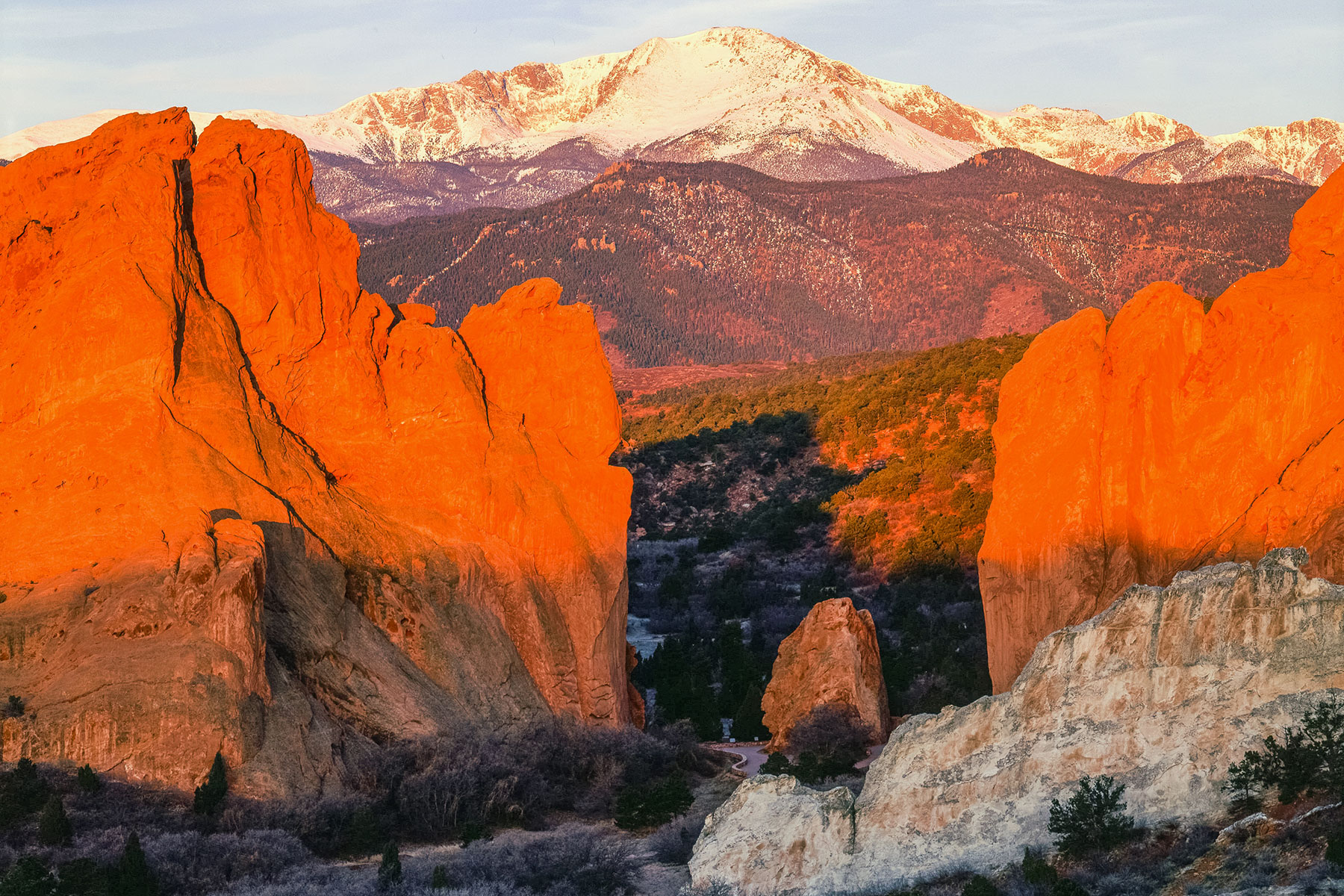History Colorado is elated to announce that John Fielder’s Colorado Collection is now publicly available. Composed of more than 6,500 photographs and objects donated to History Colorado by premier landscape photographer and renowned conservationist John Fielder, this collection immortalizes the landscapes of every county in the state and represents a life dedicated to the preservation and protection of Colorado’s public lands.
“As the Governor of Colorado, I am fortunate enough to have had the pleasure of walking into my office every day and being greeted by a John Fielder original. This photograph is a constant reminder of the natural wonders found in our state, which generations of conservationists, lawmakers, and everyday people have fought to protect for the enjoyment of future generations,” said Governor Jared Polis. “This collection, and the exhibitions that will come from it, are a chance for us to celebrate John and all he has accomplished, but more importantly, to honor the legacy he has created and the gift he is giving to the people of Colorado.”
The digitization, cataloging and upcoming exhibition development of John Fielder’s generous donation is made possible by a grant from the Telluray Foundation. This collection has been made available for personal and commercial use so it may serve as inspiration for future publications, exhibitions, and research around climate change.
“Our collection access team has put in long hours so we can follow through on John’s vision of allowing everyone to see Colorado as he did by preserving his work for future generations,” said Dawn DiPrince, executive director of History Colorado. “This is a profound opportunity for Coloradans to see the breathtaking vistas that define the Centennial State and evaluate if the relationship we have with the land will allow for our grandchildren to experience the same wonders captured by John.”
It has always been Fielder’s hope that this collection will foster a desire to be stewards of the environment which he holds dear, by providing a chance for Coloradans to follow in his footsteps of exploring the 28 mountain ranges, numerous rivers, and diverse ecosystems of Colorado.
“I have come to know that photographs can influence human action,” Fielder said. “Though I want people to be able to enjoy and savor the simple and manifest beauty inherent in my images, I also want the photos to influence how they act in their lives. I hope people who view them will understand the inextricable connectivity between all living things on the entire planet Earth, as well as the delicate connectivity between the environments, or ecosystems, in which life exists.”
With this collection now digitally available, the public can begin accessing it through the History Colorado Online Collection where they can look over the entirety of the more than 6,500 images and objects, or explore curated lists on the John Fielder’s Colorado Collection webpage that allow them to follow in Fielder’s footsteps by exploring specific counties. In addition to viewing the collection online, the public will be able to request hi-res digital copies of these images through the Stephen H. Hart Research Center at a nominal fee.
Furthermore, History Colorado is moving forward with plans to open an exhibition dedicated to the art of John Fielder in late July at the History Colorado Center. This exhibition, entitled Revealed: John Fielder’s Favorite Place, will take visitors behind the lens to see Colorado as Fielder did while also sharing tales of his treks across the Centennial State, and secrets of how he captures Colorado’s natural wonders in his iconic images.
History Colorado will also create The John Fielder Mezzanine Gallery on the second floor of the History Colorado Center. Starting in January 2024, this gallery will be regularly updated to highlight Fielder’s incredible contribution to the visual record of Colorado and explore the diverse natural and rural environments of the Centennial State.

